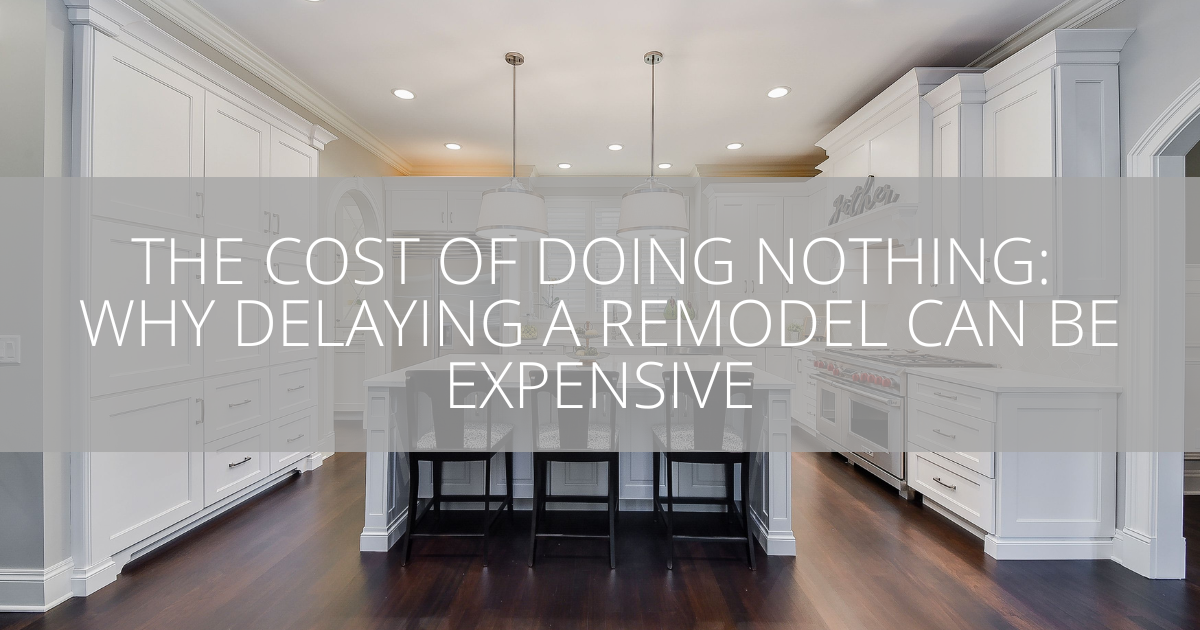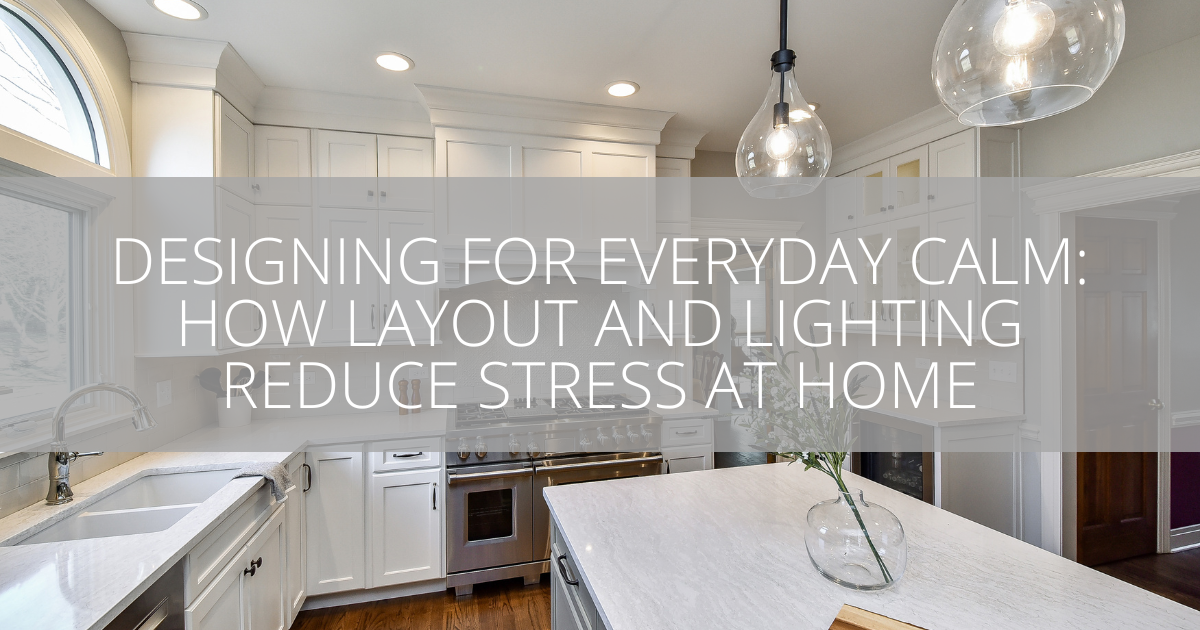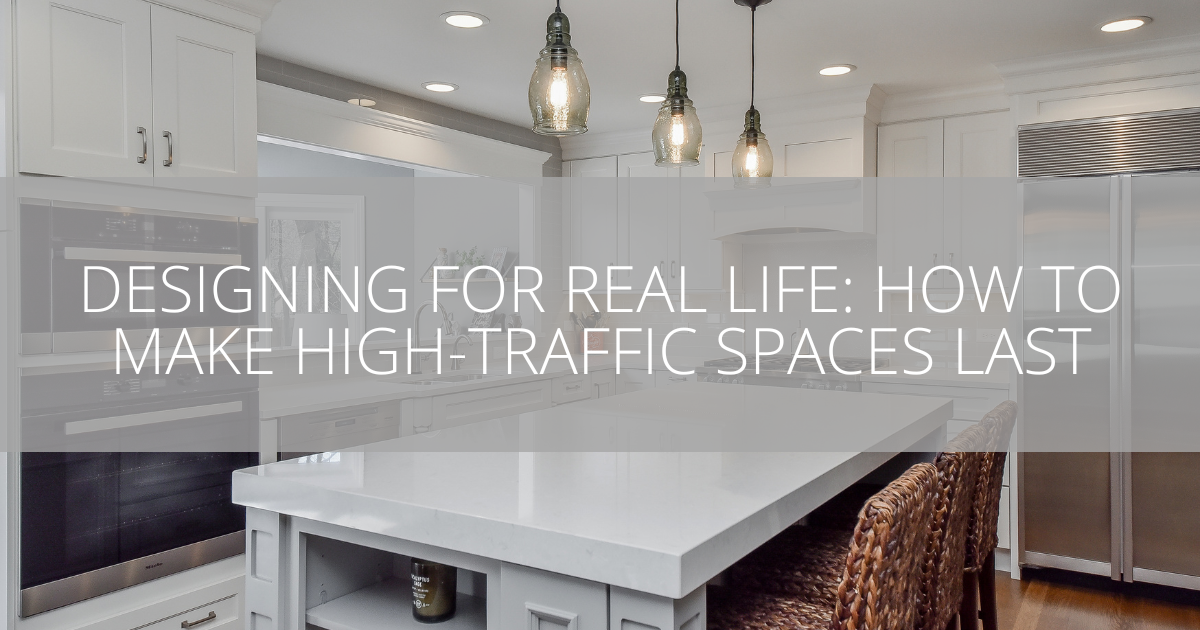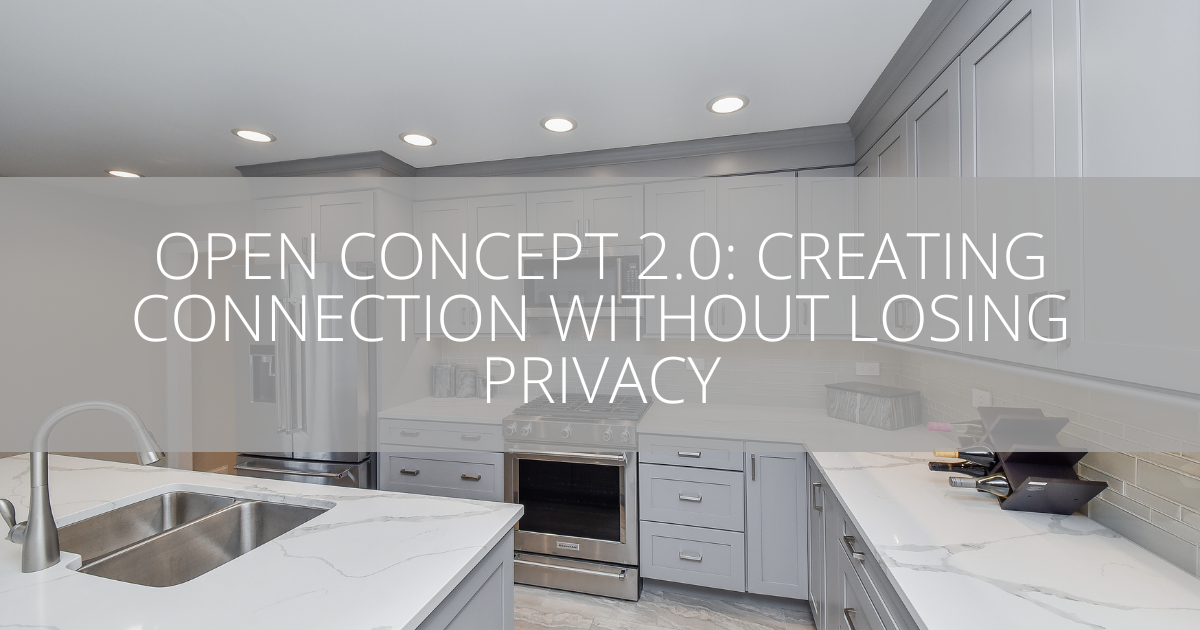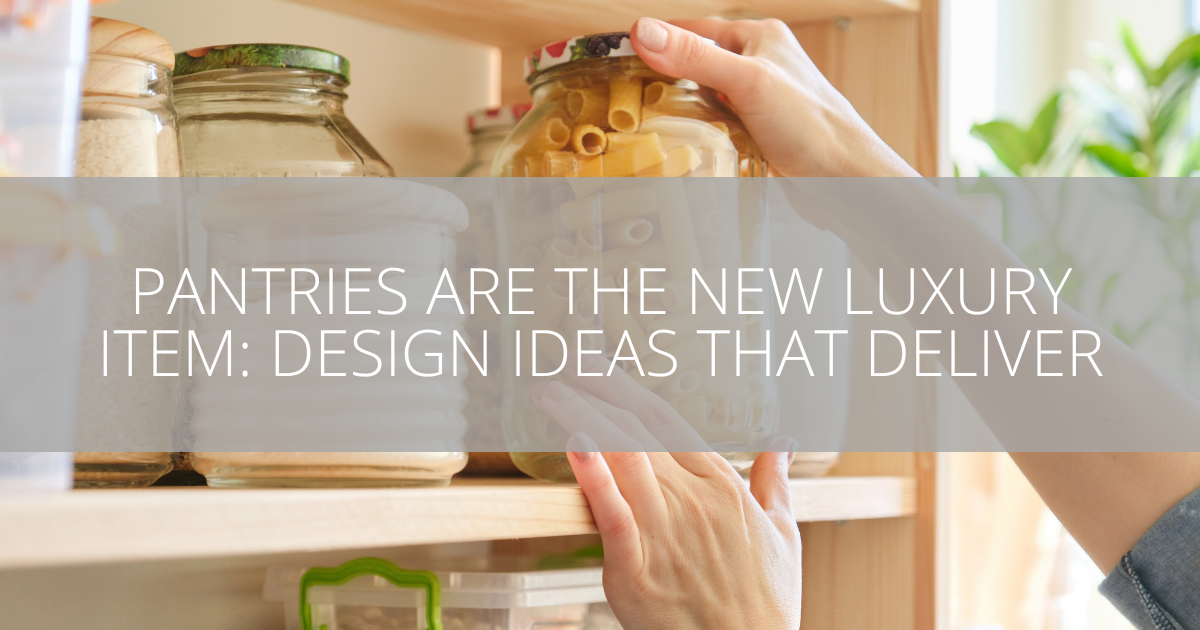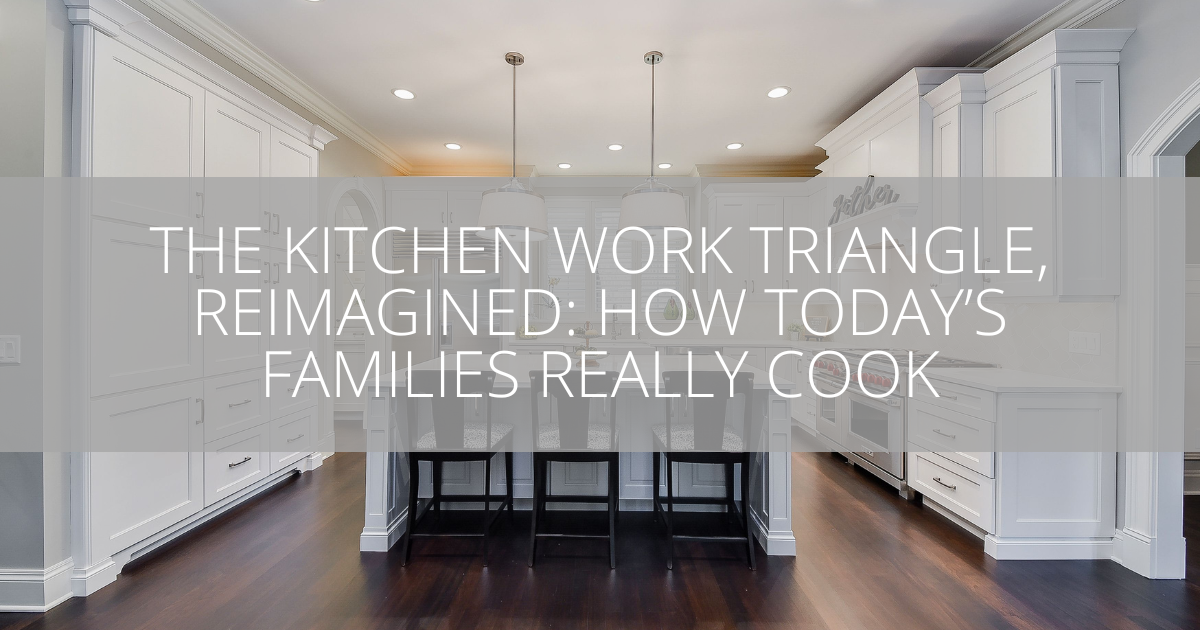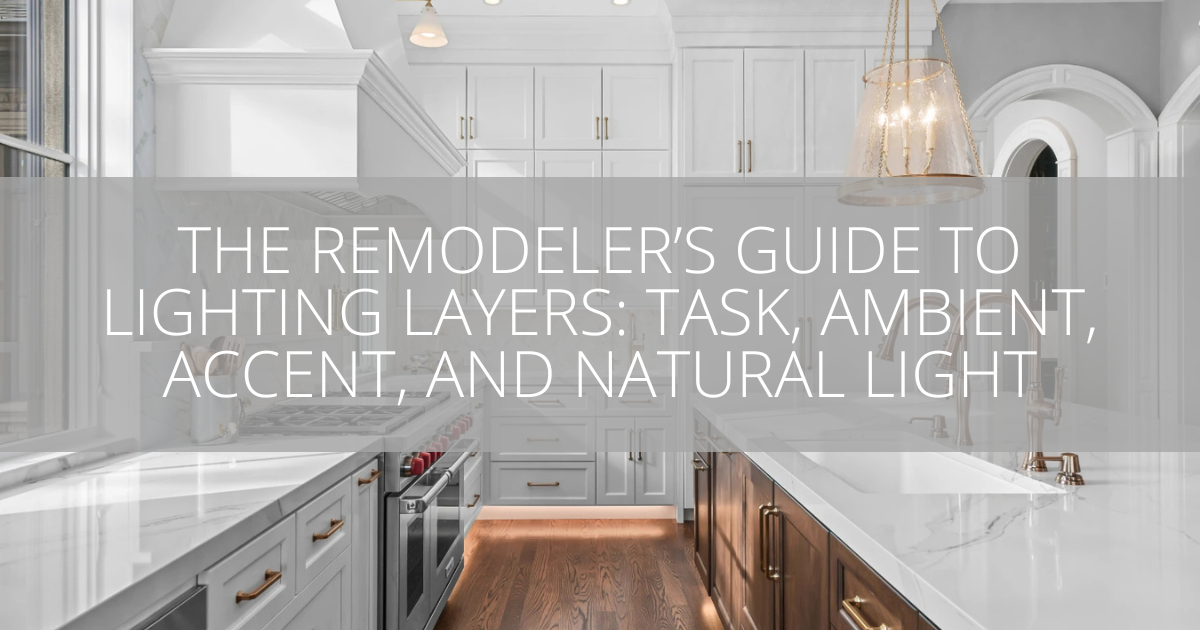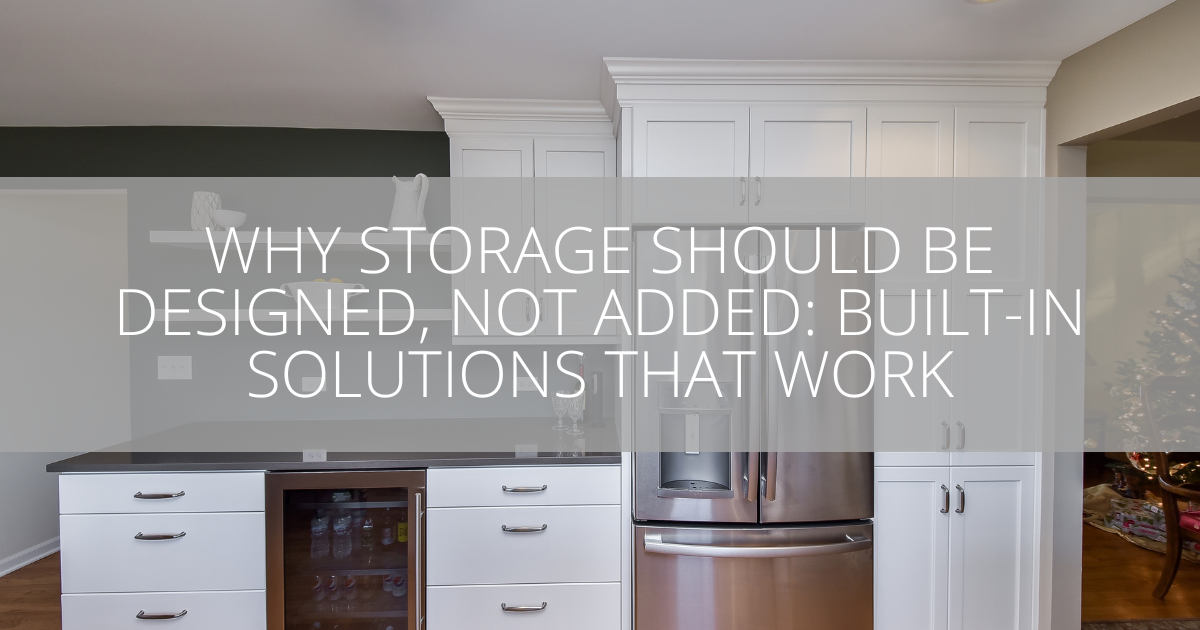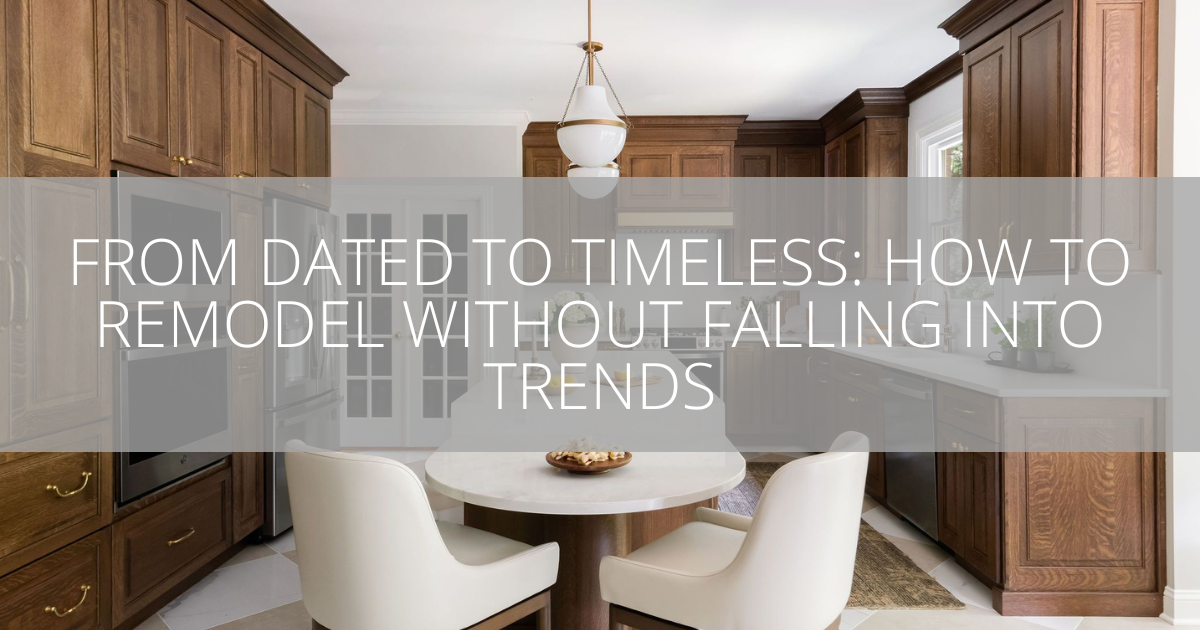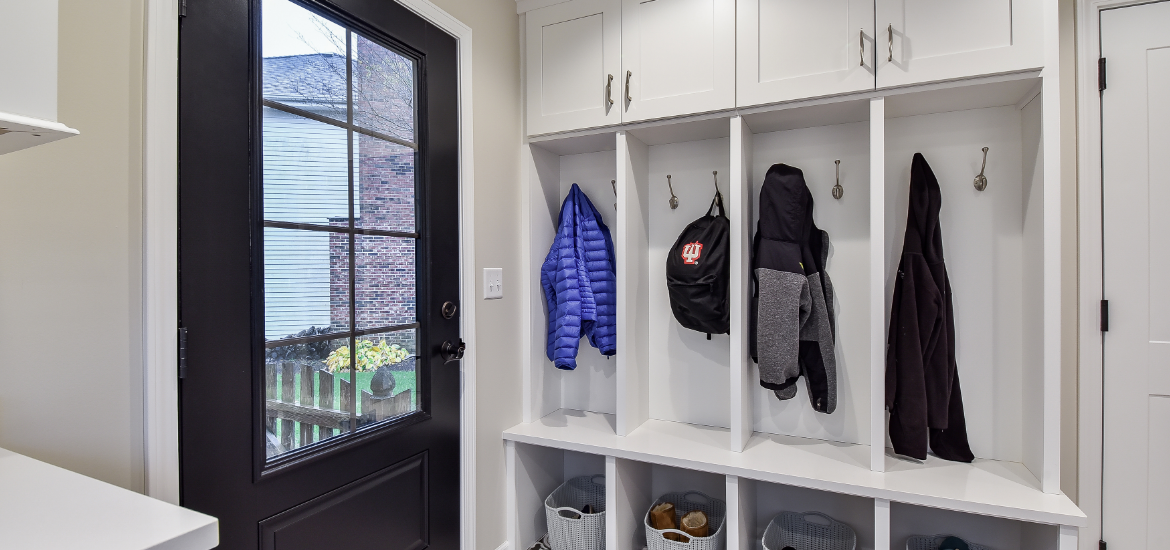
Every so often, a room that was once overlooked becomes the unsung hero of the modern home. In recent years, that space has been the mudroom. Tucked away by the garage or side entry, it’s not flashy, but it’s quickly become one of the most requested features in home remodels and for good reason.
Families today are juggling more than ever: kids, pets, groceries, sports gear, deliveries, and endless movement in and out of the house. Without a system, that daily flow turns into clutter and chaos. The mudroom steps in as the great equalizer—a space that organizes, protects, and simplifies life before it spills into the rest of your home.
What makes this evolution fascinating is how quietly it’s happened. The mudroom isn’t a showpiece like the kitchen or living room. It doesn’t need center stage. Instead, it works behind the scenes, bringing structure and calm to the moments that bookend every day, the coming and the going, the rush and the return.
At Sebring Design Build, we’ve seen firsthand how a well-designed mudroom can transform not just a floor plan, but a family’s daily rhythm. This is more than a design trend. It’s a lifestyle upgrade. In this article, we’ll explore why the mudroom has become a modern essential, how it’s changing home design, and why once you have one, you’ll never go back.
From Afterthought to Everyday Essential
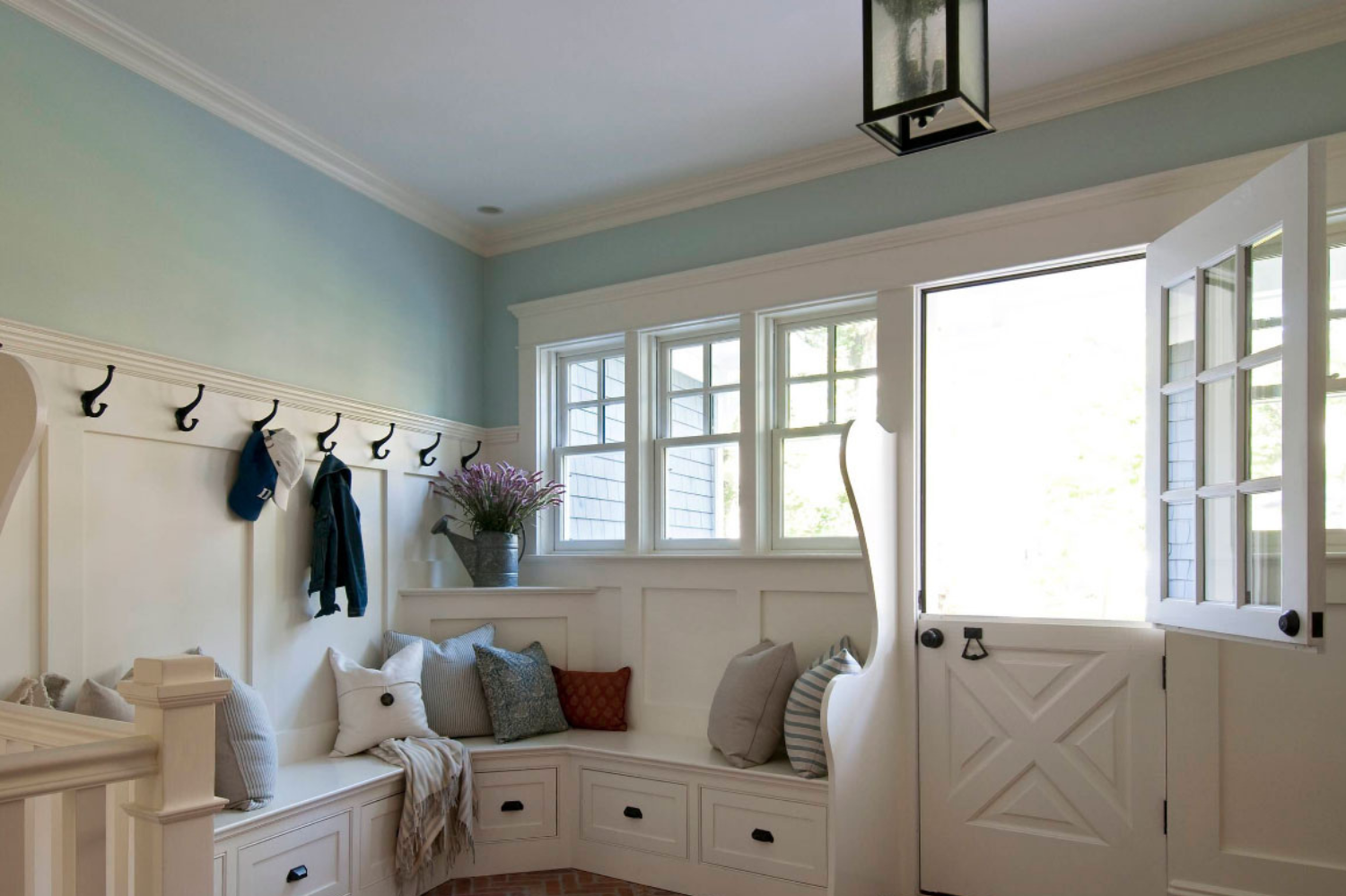
For decades, mudrooms were relegated to farmhouses or older homes in cold, wet climates. They are practical zones meant to contain the dirt. But as suburban life expanded and open-concept layouts became the norm, the need for a transition space quietly re-emerged. People began to crave a place that could absorb the everyday clutter of life—the shoes, backpacks, coats, mail, pet supplies, and deliveries that pile up at the threshold.
The modern mudroom isn’t just a rehash of old-fashioned utility spaces; it’s an answer to the new realities of how we live. Open floor plans left fewer walls and hallways to absorb the mess of daily comings and goings. Families became busier, pets became more common, and the “stuff” of life multiplied. The mudroom rose from obscurity as the architectural antidote to disorder, a way to restore calm and control without sacrificing aesthetics.
Today’s mudroom isn’t just a stopgap between the garage and the kitchen. It’s a thoughtfully designed hub that bridges the outside world and the sanctuary of home. It sets the tone for how the day begins and how it ends.
The Invisible Upgrade That Changes Everything
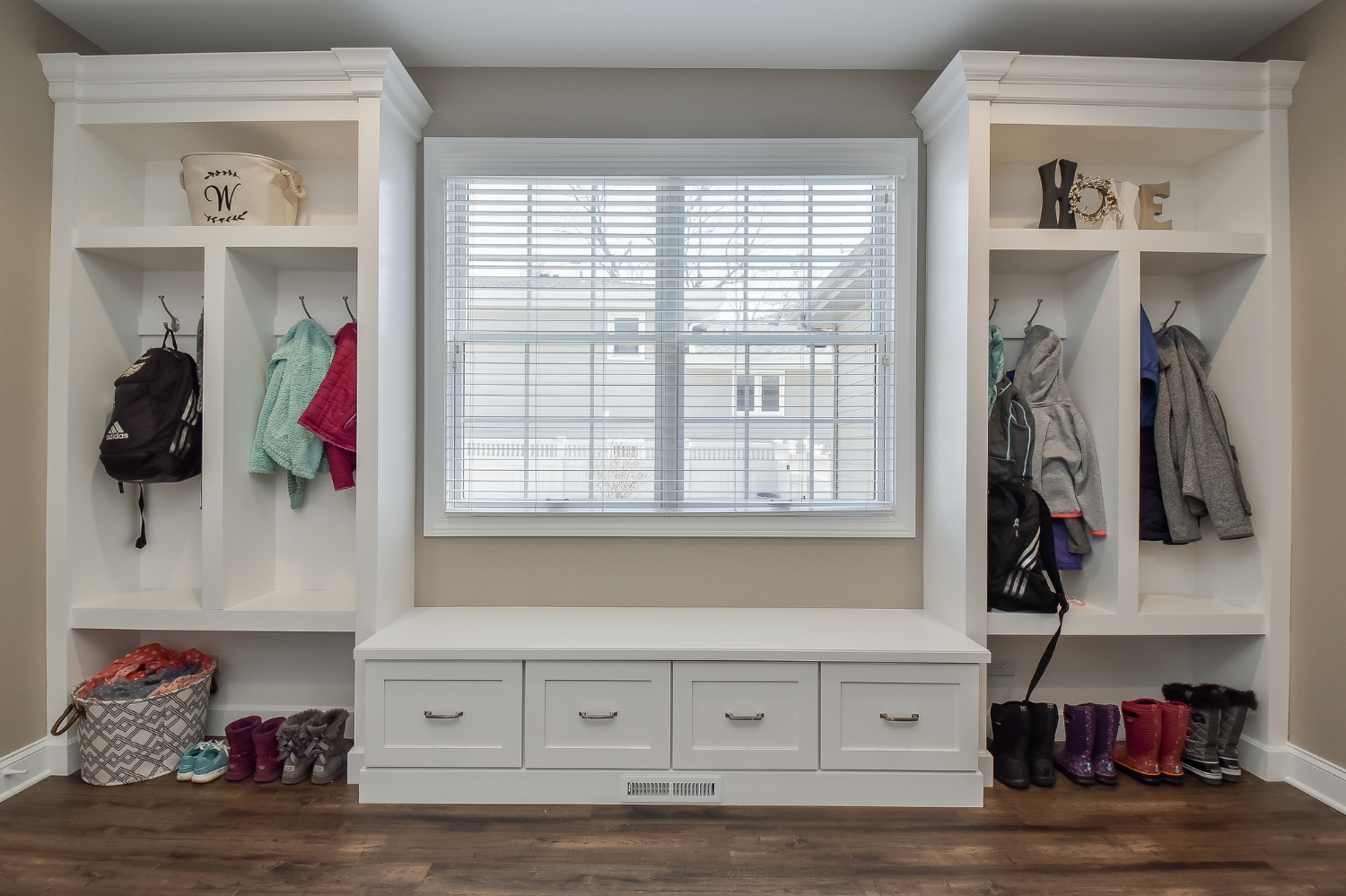
When people plan a remodel, they usually focus on the “showcase” rooms: the kitchen, the bathroom, or the living room. A mudroom rarely makes the Pinterest board at first. But once they experience it, even in a modest form, homeowners quickly realize it’s the most transformative space in the house.
The appeal of the mudroom isn’t about luxury; it’s about efficiency and ease. It’s about building an environment that supports daily life instead of fighting against it. Every coat hook, bench, drawer, and cubby is part of a subtle choreography that keeps the rest of the house running smoothly.
Families love mudrooms because they function as a buffer, a protective layer between the outside world and the heart of the home. Rain, snow, dirt, and debris stay where they belong instead of being tracked through freshly cleaned floors. Wet coats dry, boots drip, and pets shake off in a contained zone. Over time, the benefits compound: less cleaning, less clutter, and a more relaxed home environment.
But cleanliness is only half the story. The modern mudroom is also a masterpiece of organization. Built-ins and custom cabinetry provide a place for everything, turning the usual jumble of shoes, keys, and backpacks into an orderly system. Many families create individual storage “lockers” for each person, a small but powerful touch that makes mornings less chaotic and evenings more peaceful.
Why the Mudroom Boom Happened
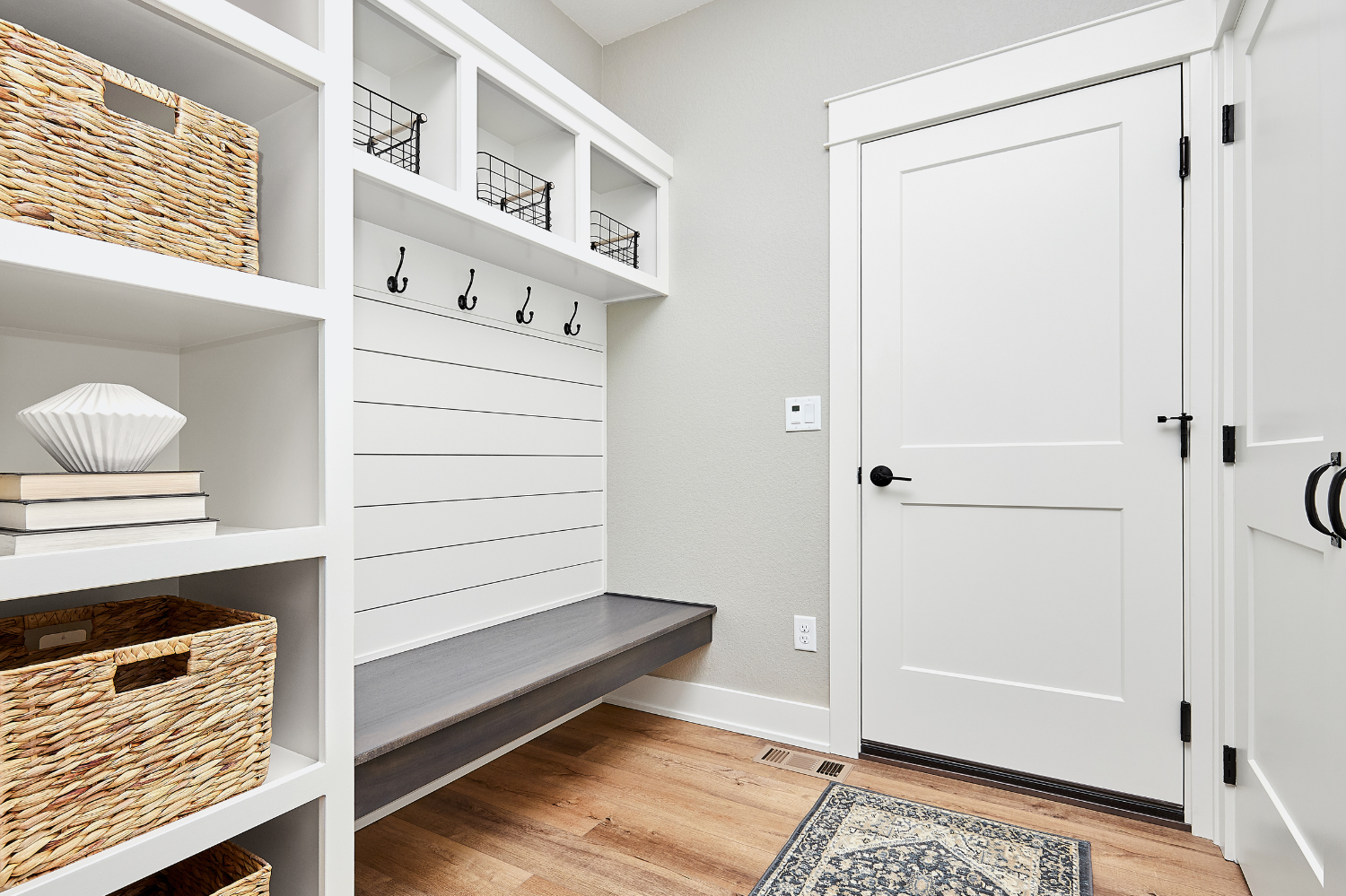
It’s easy to assume the mudroom’s resurgence is a design trend, but it’s more of a lifestyle shift. Several forces converged over the past decade to push this once-humble room into the spotlight.
Open floor plans, once celebrated for their airiness, exposed a hidden problem: clutter has nowhere to hide. The absence of walls made homes feel spacious, but also made it impossible to contain the daily mess that naturally accumulates near entrances. The mudroom solved that problem elegantly, providing structure without sacrificing openness.
At the same time, modern family life has become increasingly complex. Between work, school, sports, and social activities, homes are revolving doors of movement. Parents, kids, and even pets come and go multiple times a day, often with gear in tow. The mudroom creates a sense of order within that motion. It’s a reset point, a place where you can transition from the outside rush to the calm of home life.
The pandemic accelerated this trend dramatically. Suddenly, the front and side entries became crucial for hygiene and organization. People needed somewhere to remove shoes, wash hands, and drop off packages without contaminating the main living areas. A well-designed mudroom became not just convenient but reassuring, a small but meaningful line of defense between “out there” and “in here.”
Another factor in the mudroom’s rise is the growth of pet ownership. More families now share their homes with dogs and cats than ever before, and that comes with its own set of daily challenges, muddy paws, leashes, food storage, and bathing. The mudroom offers an ideal solution: a space where pets can be cleaned, fed, and organized without taking over the kitchen or laundry room.
Finally, homeowners are realizing that this “invisible upgrade” adds real value. When it comes time to sell, a well-designed mudroom signals that a home is truly livable. Buyers see it not as extra square footage, but as a marker of smart, family-friendly design. In competitive real estate markets, that kind of practicality can make all the difference.
What Makes a Great Mudroom
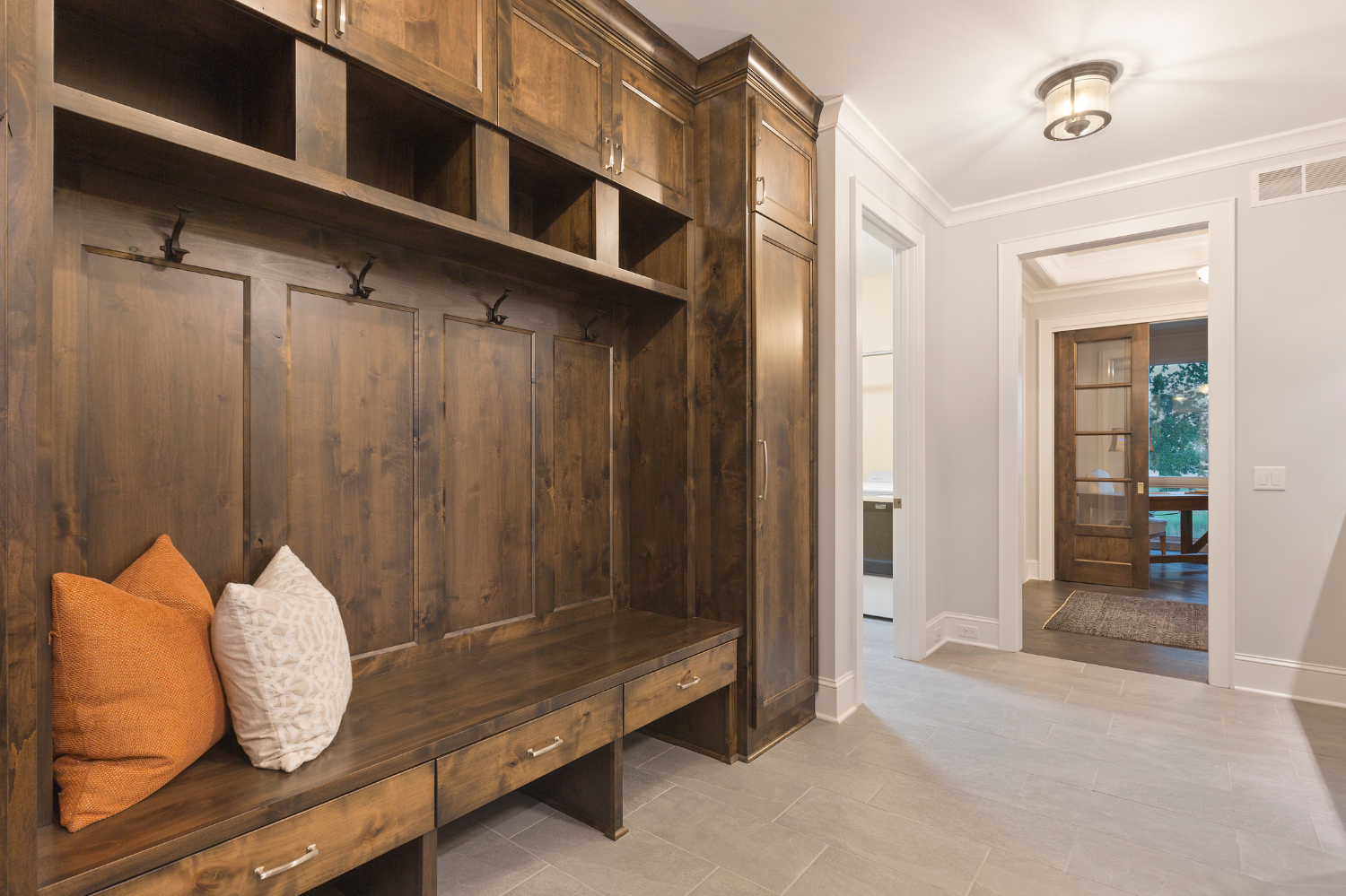
Designing an effective mudroom takes more than a few hooks and baskets. It’s about understanding how the space connects with the rest of the home, physically and emotionally. The best mudrooms balance three things: location, durability, and usability.
Most homeowners position their mudroom near the garage or side entry, since that’s where daily traffic naturally flows. It should feel like a seamless part of the journey from car to kitchen, not an isolated corner. Ideally, it’s close enough to the laundry or utility area to handle messes quickly.
Durability is another essential element. This space takes a beating, wet shoes, grit, heavy bags, and constant use. Porcelain or slate tile floors work beautifully because they resist water and clean up easily. Many homeowners choose darker grout colors or patterned tiles that disguise wear over time. For walls and cabinetry, wipeable paints and robust finishes ensure longevity without sacrificing style. Adding paneling or wainscoting protects the lower walls while giving the room a finished, intentional look.
Storage is the secret ingredient. Every item that comes into the house—coats, shoes, sports equipment, mail, umbrellas, backpacks—needs a designated home. Built-in benches with drawers below and cubbies above maximize vertical space. Closed cabinets keep visual clutter to a minimum, while open shelving allows quick access to daily essentials. Some families integrate charging stations or a household command center: a place for mail sorting, calendars, and keys. These turns the mudroom into the home’s nerve center.
Lighting and ventilation, though often overlooked, can make or break the experience. A bright, well-lit mudroom feels welcoming, not utilitarian. Natural light from a window or transom can make a huge difference, as can warm LED lighting over benches and cabinetry. Adequate airflow prevents damp gear from getting musty: a small detail with a big impact.
Where Utility Meets Design
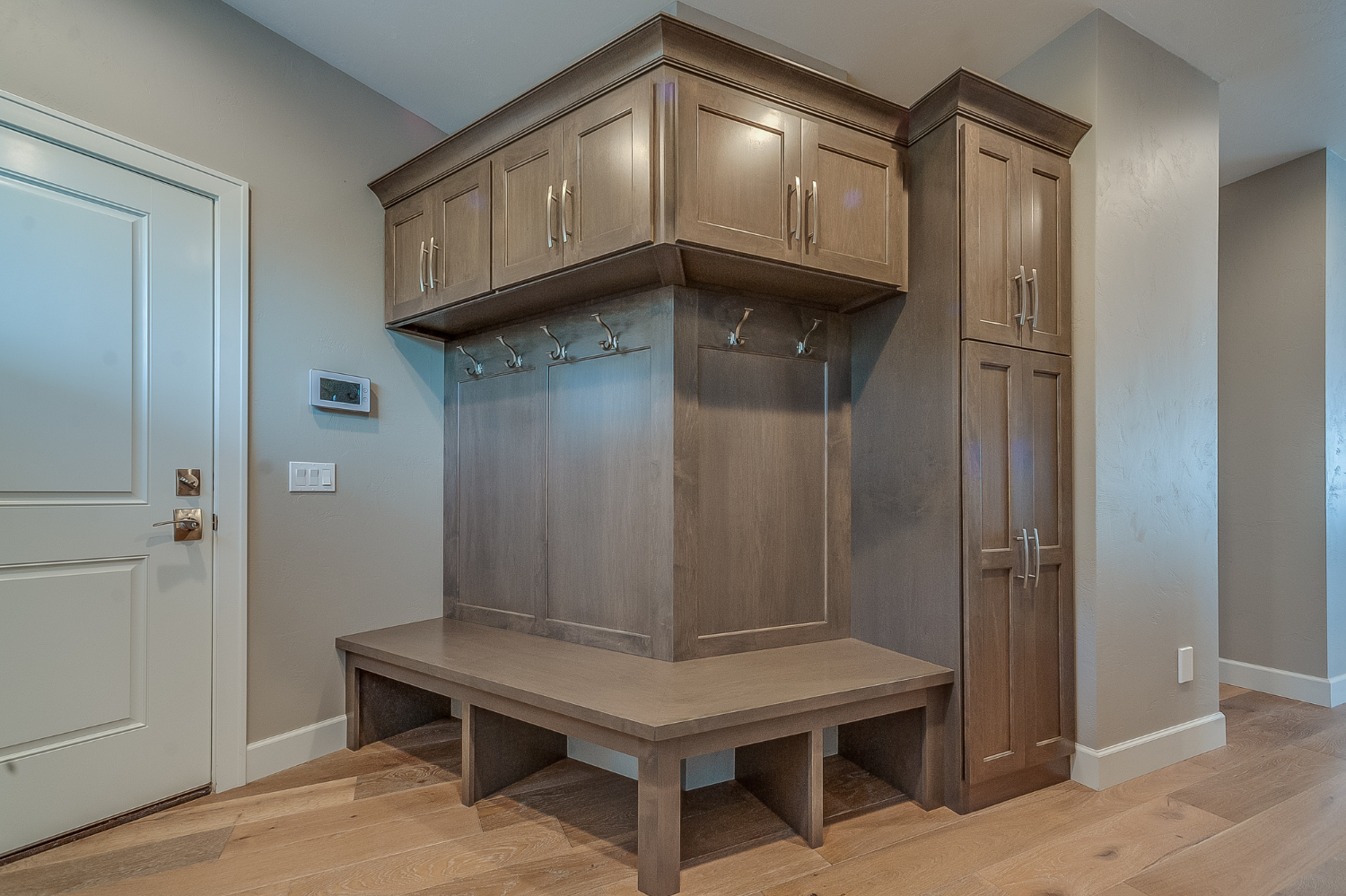
While function drives the mudroom’s purpose, style gives it staying power. Homeowners want spaces that look as good as they perform. Today’s mudrooms are design statements in their own right, blending seamlessly with the home’s overall aesthetic.
Many designs lean into natural, earthy tones. Shades of beige, gray, green, or blue connect visually to the outdoors. Some embrace contrast, pairing crisp white cabinetry with matte black hardware or patterned tile. Others take cues from farmhouse design, incorporating reclaimed wood benches and shiplap walls for warmth and texture.
Whatever the style, the best mudrooms share one trait: they feel calm. Even when filled with practical elements, the design conveys order and cleanliness. The space isn’t just a landing pad; it’s a reflection of how the home functions and feels.
How Families Are Using Mudrooms Today
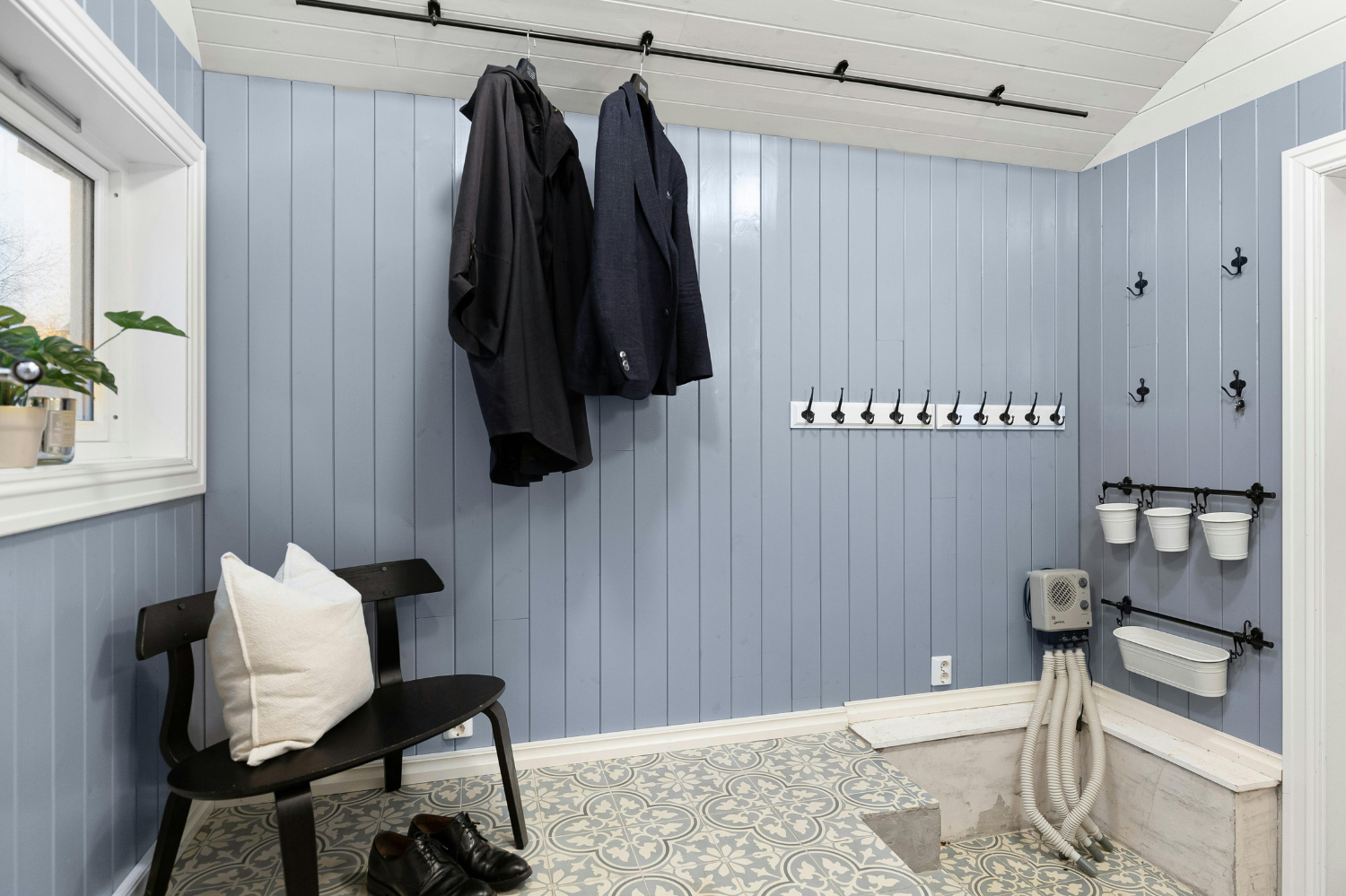
At Sebring Design Build, we’ve worked with families across the spectrum: from large households with busy kids to couples downsizing into smaller, smarter spaces. The one common thread is how transformative a well-designed mudroom can be.
For families with multiple children, we often build custom lockers or cubbies: one for each person. This is to end the morning chaos of missing shoes and misplaced backpacks. Each space includes hooks, shelves, and sometimes even charging drawers for devices. Parents tell us it cuts their morning scramble in half.
Pet owners tend to prioritize washable materials and specialized features. One client requested a built-in dog washing station right next to the garage door, complete with a handheld sprayer and towel storage. Another wanted hidden pull-out drawers for dog food and bowls that slide back in after mealtime. These details might seem small, but they transform daily routines into something manageable and even enjoyable.
We’ve also designed mudrooms that double as elegant laundry spaces. These hybrid rooms allow homeowners to drop dirty clothes straight into the washer, dry wet jackets, or fold clean laundry—all without moving between rooms. The result is an efficient, high-utility zone that quietly keeps the household running.
Even in smaller homes, mudrooms can make an impact. A narrow hallway can become a mini-mudroom with a built-in bench and overhead storage. We’ve seen clients carve out space from a closet or laundry nook to create a “micro-mudroom” that delivers the same benefits in a fraction of the footprint. It’s proof that good design isn’t about size. It’s about intention.
The Psychology of the Mudroom
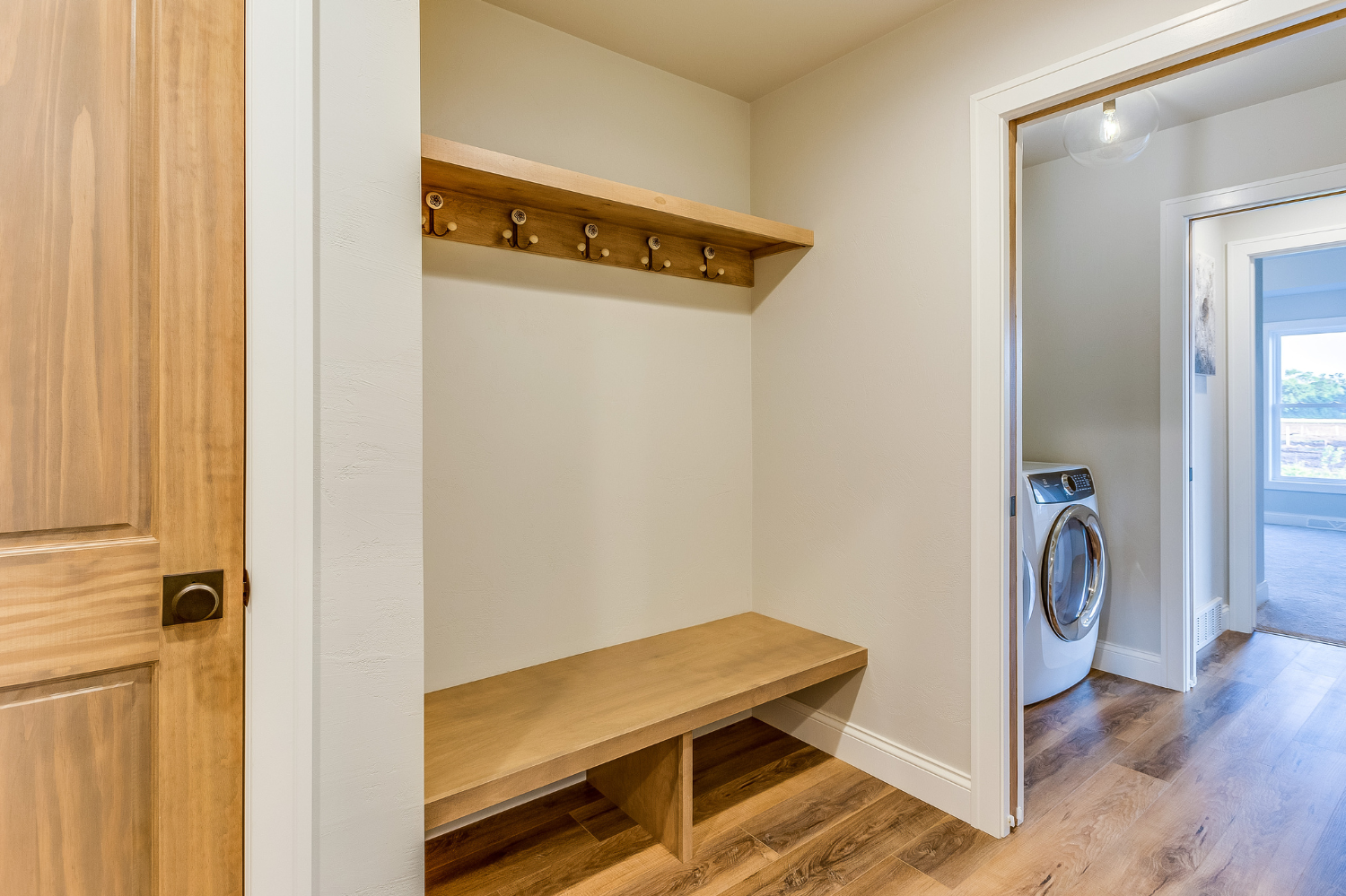
Beyond the practical, there’s something deeply satisfying about the mudroom’s role in the home. It creates a pause, a moment between the public and the private, between the noise outside and the calm inside.
That small ritual of setting down your keys, taking off your shoes, and hanging up your coat has a quiet emotional power. It signals the transition from work to rest, from motion to stillness. For families, it can even shape behavior: kids learn where their belongings go, routines become predictable, and mornings become less stressful.
This sense of control, of everything having its place, contributes to a larger feeling of harmony in the home. The mudroom doesn’t just keep the house tidy; it keeps life balanced.
Small Homes, Big Ideas
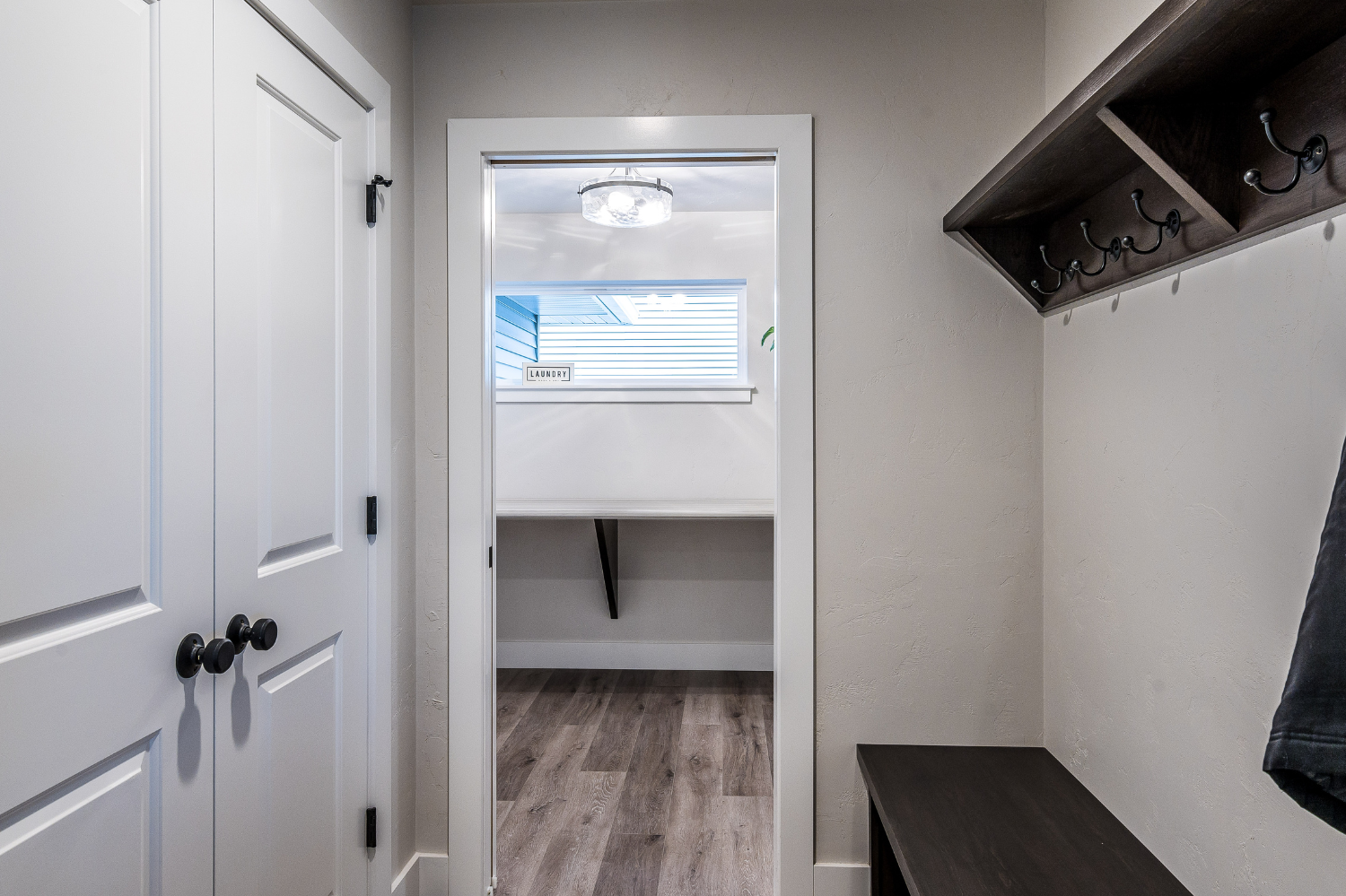
Not everyone has room for a full-sized mudroom, but the philosophy behind it can be applied anywhere. A well-placed bench, a wall of hooks, or a cabinet built into a side entry can mimic the functionality on a smaller scale. The key is understanding what your family needs most—a place to store shoes, a landing zone for mail, or a nook for pet supplies—and tailoring the design accordingly.
Even a narrow hallway can handle the job if designed smartly. A shallow bench with drawers below, hooks above, and a shelf for baskets can transform an unused stretch of wall into a highly functional area. A few square feet used wisely can have the same impact as a full room.
Looking Ahead: The Future of Mudrooms
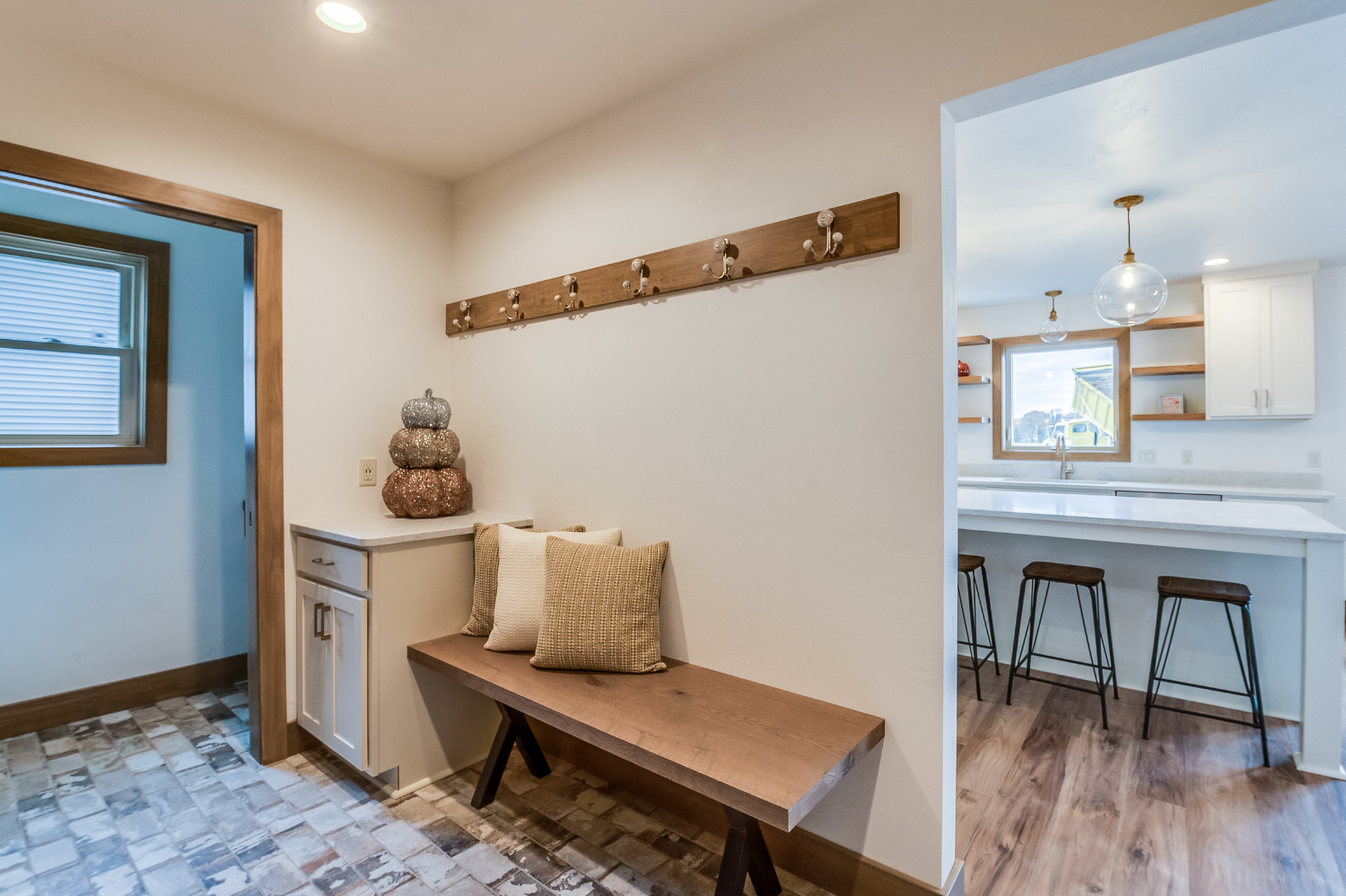
As home design evolves, the mudroom continues to adapt. We’re seeing more integration with technology. Built-in charging drawers for devices, smart locks and lighting that activate upon entry, and modular storage systems can adjust as families grow or change.
Sustainability is another growing focus. Homeowners are opting for reclaimed wood, low-VOC paints, and recycled tiles to reduce environmental impact without sacrificing durability.
Designers are also exploring flexibility: movable partitions, adaptable shelving, and convertible benches that serve multiple purposes. In some larger homes, dual mudrooms: one off the garage and one off the main entrance. They are becoming common, especially in multi-generational households or homes with separate workspaces.
The mudroom is no longer a passing trend. It’s a permanent part of how modern families think about comfort, cleanliness, and convenience.
Conclusion: The Mudroom That Changes Everything
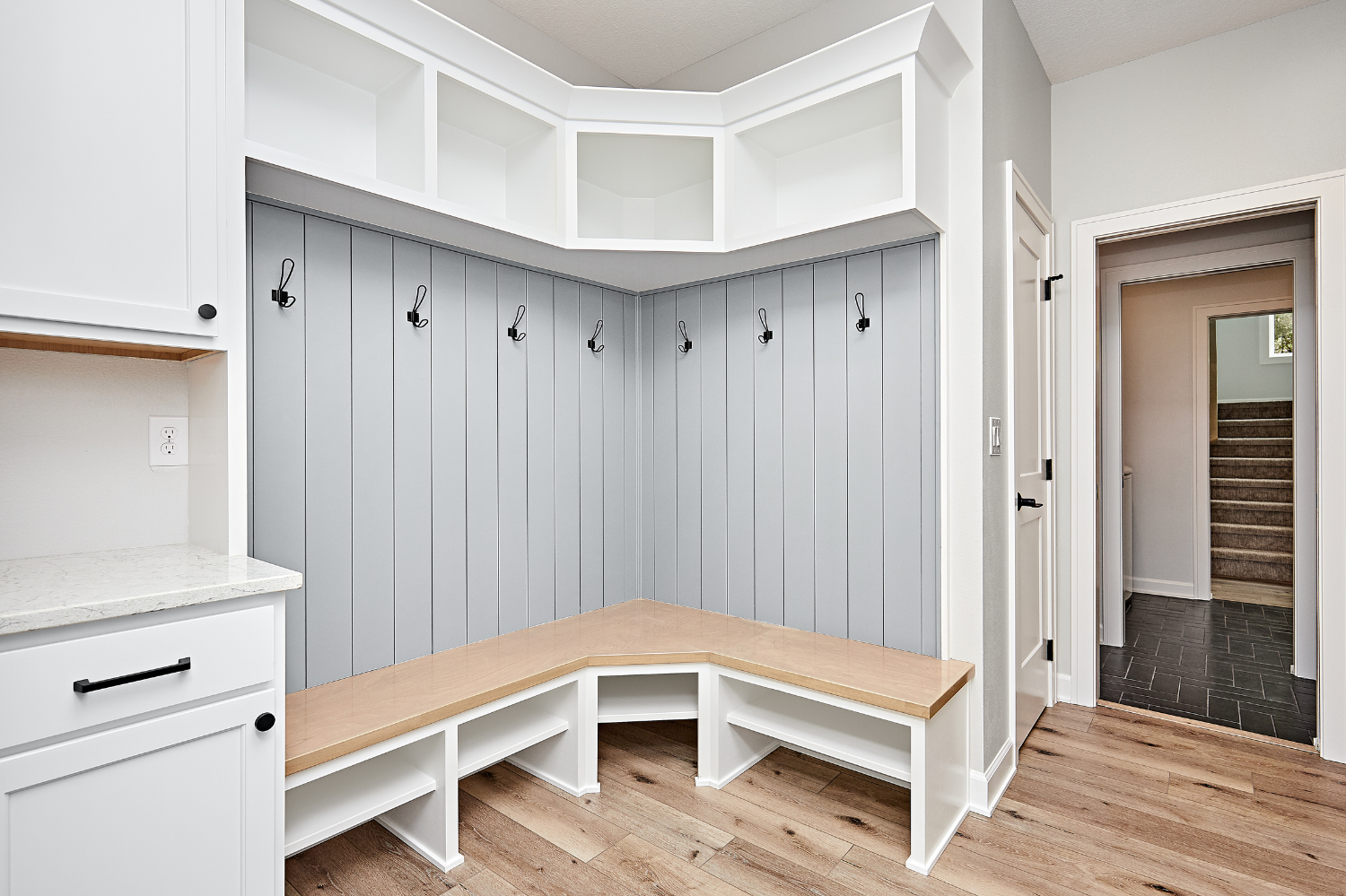
The rise of the mudroom isn’t just a design trend. It’s a reflection of how families truly live today. Life is fast, busy, and often messy. The mudroom steps in as the quiet hero, keeping that everyday chaos in check. It’s the space that absorbs the dirt, the gear, the clutter, and gives it all a home, so the rest of your house can stay calm, clean, and comfortable.
More than a utility zone, the mudroom has become a lifestyle statement. One that says your home is designed for the way you actually live. It’s the bridge between work and rest, outdoors and indoors, activity and relaxation. Every detail, from durable flooring to custom cabinetry, works together to simplify daily routines and bring a sense of order to the day.
Whether you have a big family, busy pets, or just crave a more organized entryway, a thoughtfully designed mudroom transforms not only how your home looks but how it feels. It’s one of those subtle upgrades that you’ll appreciate every single day, long after the remodel is done.
At Sebring Design Build, we specialize in creating spaces that look beautiful and work even better. If you’re ready to add this hardworking, high-impact feature to your home remodeling in Franklin, our team can help you design a mudroom that fits your family’s rhythm perfectly.
Contact Sebring Design Build today to start planning your custom mudroom—the upgrade you’ll wonder how you ever lived without.
Check Out Our Other Great Articles:
- Exceptional Walkout Basement Ideas You Will Love
- Gaming and Pool Table Room Sizes
- How To Add Value To Your Home With A Smart Remodel

